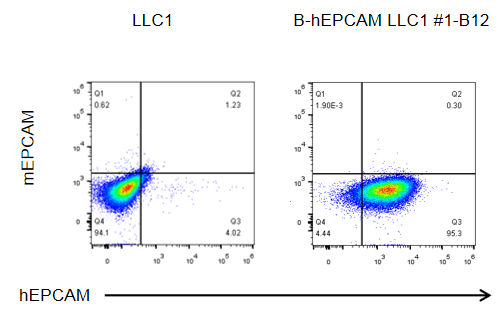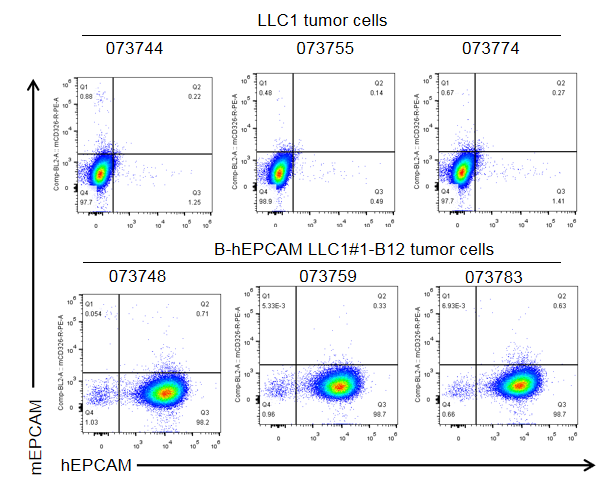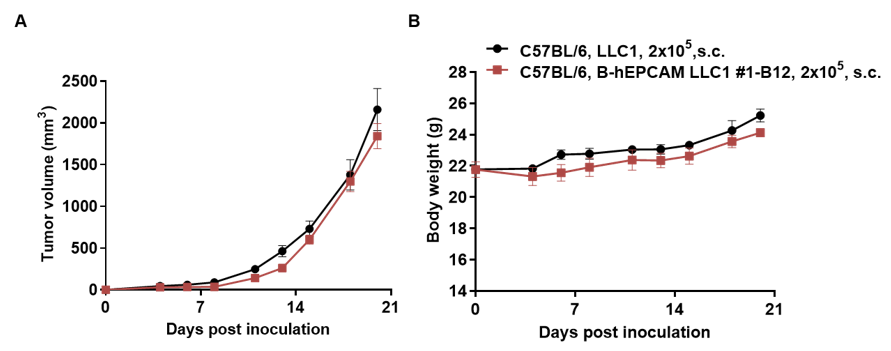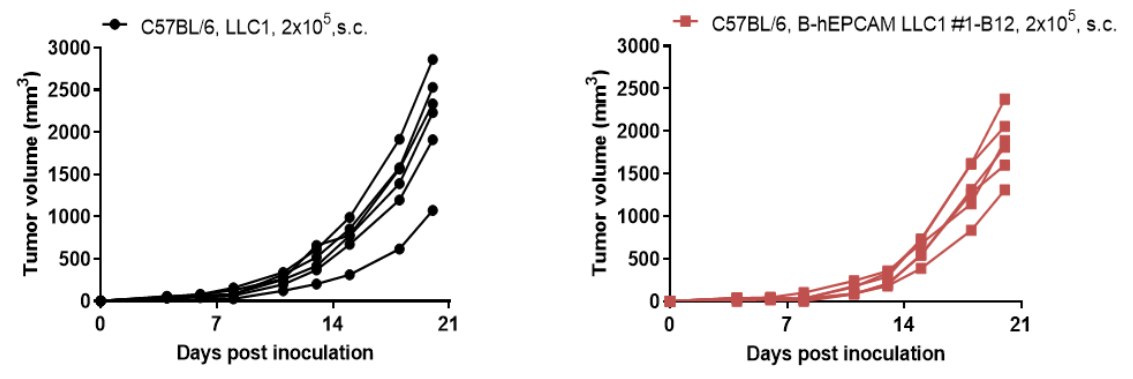
B-hEPCAM LLC1
• 322009

B-hEPCAM LLC1
• 322009
在此页面上
- Description
- Targeting strategy
- Phenotypic analysis
- Tumorigenicity
发表文章
- February 16, 2024Oncoimmunology
- May 13, 2022
The establishment and application of CD3E humanized mice in immunotherapy
Experimental Animals
 Description
Description
The mouse Epcam gene was replaced by human EPCAM coding sequence in B-hEPCAM LLC1 cells. Human EPCAM is highly expressed on the surface of B-hEPCAM LLC1 cells.
 Targeting strategy
Targeting strategy
 Protein expression analysis
Protein expression analysis

 Protein expression analysis of tumor cells
Protein expression analysis of tumor cells

 Tumor growth curve & Body weight changes
Tumor growth curve & Body weight changes

Subcutaneous homograft tumor growth of B-hEPCAM LLC1 cells. B-hEPCAM LLC1 cells (2x105) and wild-type LLC1 cells (2x105) were subcutaneously implanted into C57BL/6 mice (female, 11-week-old, n=6). Tumor volume and body weight were measured thrice a week. (A) Average tumor volume ± SEM. (B) Body weight (Mean± SEM). Volume was expressed in mm3 using the formula: V=0.5 X long diameter X short diameter2. As shown in panel A, B-hEPCAM LLC1 cells were able to establish tumors in vivo and can be used for efficacy studies.
 Tumor growth curve of individual mice
Tumor growth curve of individual mice

B-hEPCAM LLC1 tumor growth of individual mice. B-hEPCAM LLC1 cells (2x105) and wild-type LLC1 cells (2x105) were subcutaneously implanted into C57BL/6 mice (female, 11-week-old, n=6). As shown in panel, B-hEPCAM LLC1 cells were able to establish tumors in vivo and can be used for efficacy studies.